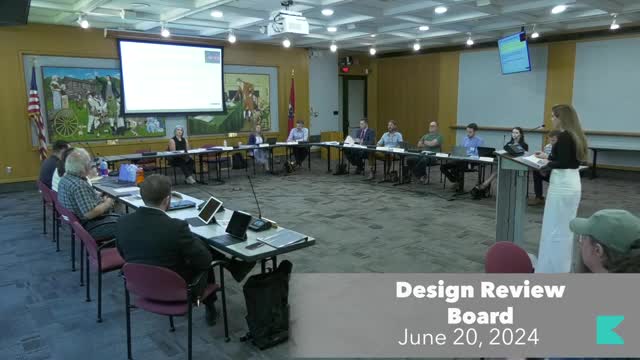City leaders clash over Knoxville's riverfront development plans
June 21, 2024 | Design Review Board Meetings, Knoxville City, Knox County, Tennessee

This article was created by AI summarizing key points discussed. AI makes mistakes, so for full details and context, please refer to the video of the full meeting. Please report any errors so we can fix them. Report an error »

In a recent government meeting, officials highlighted the urgent need to improve access to the Tennessee River, emphasizing its potential as a vital community resource. The discussions centered around the ongoing disconnect between downtown Knoxville and the river, which has been exacerbated by urban development that has created barriers, notably an opaque wall separating the city from the waterfront.
The meeting referenced historical planning efforts, including the 1987 downtown Knoxville development plan, which aimed to address these issues but has seen limited progress. Comparisons were drawn to Chattanooga's successful urban revitalization efforts, particularly the Vision 2000 initiative, which focused on reconnecting the city with its riverfront through thoughtful urban design. Chattanooga's approach included low-rise buildings and parks that enhance access to the river, contrasting sharply with Knoxville's current trajectory, which risks overshadowing the natural landscape with high-rise structures.
Participants expressed concern over proposed developments that could obstruct scenic views and diminish the city's aesthetic appeal. The importance of preserving the visual integrity of the Henley Street Bridge approach was underscored, with calls for mid-rise, terraced structures that would maintain the \"city on a green hillside\" appearance.
Additionally, the meeting addressed the preservation of historic trees in the area, with plans to submit them for recognition as significant urban landmarks. Community members voiced frustration over the slow pace of change, urging city planners to adopt a more proactive approach to urban development that prioritizes connectivity to the river and enhances the quality of life for residents.
The discussions reflect a growing awareness of the need for sustainable urban planning that respects both the environment and the community's historical context, as Knoxville seeks to redefine its relationship with the Tennessee River.
The meeting referenced historical planning efforts, including the 1987 downtown Knoxville development plan, which aimed to address these issues but has seen limited progress. Comparisons were drawn to Chattanooga's successful urban revitalization efforts, particularly the Vision 2000 initiative, which focused on reconnecting the city with its riverfront through thoughtful urban design. Chattanooga's approach included low-rise buildings and parks that enhance access to the river, contrasting sharply with Knoxville's current trajectory, which risks overshadowing the natural landscape with high-rise structures.
Participants expressed concern over proposed developments that could obstruct scenic views and diminish the city's aesthetic appeal. The importance of preserving the visual integrity of the Henley Street Bridge approach was underscored, with calls for mid-rise, terraced structures that would maintain the \"city on a green hillside\" appearance.
Additionally, the meeting addressed the preservation of historic trees in the area, with plans to submit them for recognition as significant urban landmarks. Community members voiced frustration over the slow pace of change, urging city planners to adopt a more proactive approach to urban development that prioritizes connectivity to the river and enhances the quality of life for residents.
The discussions reflect a growing awareness of the need for sustainable urban planning that respects both the environment and the community's historical context, as Knoxville seeks to redefine its relationship with the Tennessee River.
View full meeting
This article is based on a recent meeting—watch the full video and explore the complete transcript for deeper insights into the discussion.
View full meeting
